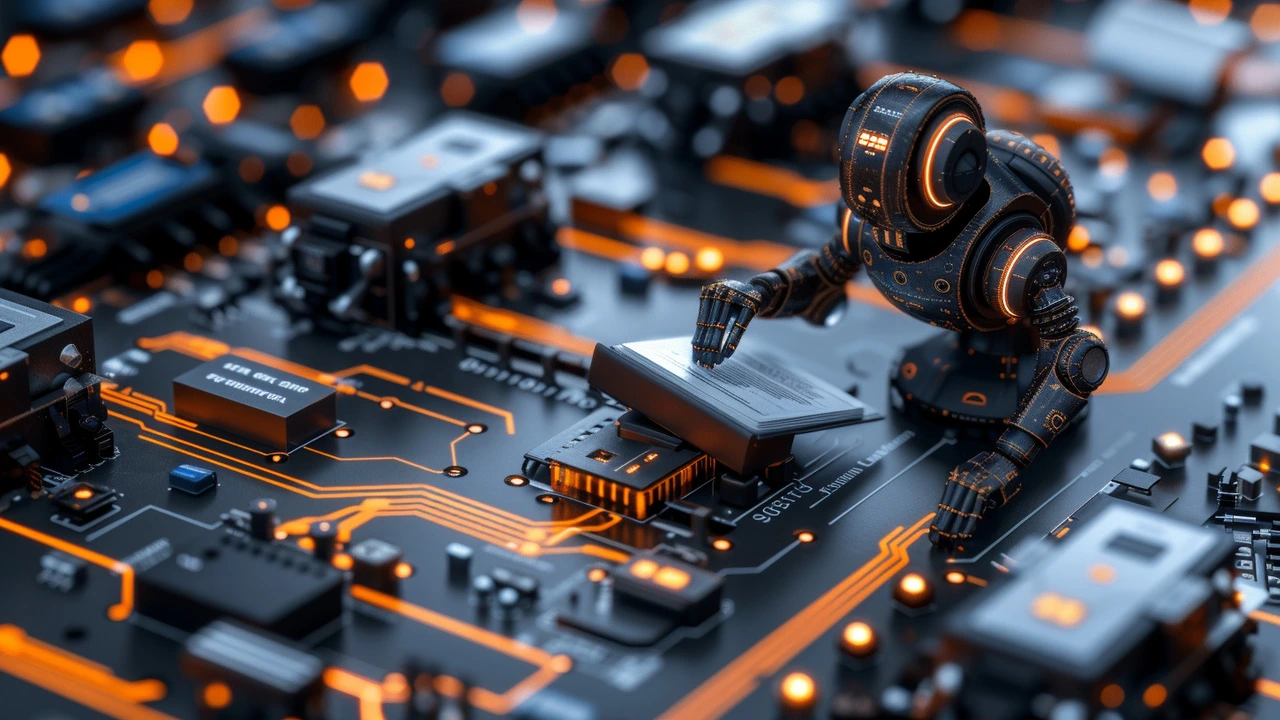First Steps into the World of Artificial Intelligence
Believe it or not, I very distinctly remember the day my corgi, Bella, had managed to sneak into the kitchen and absolutely ravage last night’s pot roast... all using her sheer intelligence. I was puzzled and amused and thought, "If only my computer could be as intelligent and astute!" Artificial Intelligence (AI) has always been a fascination for me... kind of like how Bella is with roast.
AI is not a product of the recent century. It’s been around since the advent of computers. The concept is based on the very fundamental computer programming rule of input and output. Just like my other pet - my sly tabby cat, Whiskers - it sneaks up on you with its subtlety and before you know it, has a colossal impact on different aspects of our lives.
Understanding the Basics of Artificial Intelligence
In simpler terms, my friend, AI is a type of computer science used to create intelligent systems which are able to perform tasks without the help of human beings. Things that are easy for humans, like observing our environment, learning from it and making decisions - that’s what AI aims to achieve in systems, making them as autonomous as possible... and sometimes, even more effective than us, as you might know if you've ever played some of the modern video games!
AI could be categorized into two types: Weak or Narrow AI, and Strong AI. Weak AI, like its name indicates, is designed to perform a narrow task such as voice recognition. An example of this is Siri or Alexa. And then there’s Strong AI which carries on tasks that a human being would find intricate, like chess games. You must have heard about IBM’s Deep Blue that defeated the international grandmaster chess champion, Garry Kasparov back in 1997, right? Now, let's delve deeper into these types of AI.
Mastering the Practical Aspects of Artificial Intelligence
Learning about AI can be as tough or as simple as you make it. The beauty about this technology is that you wouldn't even need a super hi-tech computer or software. A simple laptop with a good internet connection and some dedicated hours to spend could be all you need to get started, and plenty of free resources are available online to help you.
As for the programming languages - Python, R, Java and Prolog are among the popular choices. However, I personally find Python the most user-friendly due to its simple syntax and a large community of programmers practising it worldwide. It’s like that good friend who always has your back - dependable and accommodating. Just like my Bella, who is always there to give me company during the late night stints on the laptop.
Establishing a Career in Artificial Intelligence
It’s increasingly being said that AI could be the next big thing on the job market. Opportunities in AI are growing day by day and so is the demand for trained professionals. Frankly, who wouldn't want a piece of the big AI pie? Just like my pets Bella and Whiskers love their share of tuna!
If you’re keen on starting a career in AI, knowing a programming language could be your first stepping stone. Then a degree or a certification in AI or related fields from a reputed university or online course provider would be of added advantage. Don't deter if you have a non-technical background. Remember, it’s never too late to learn something new.
AI is no magic, my friend. It’s a tool that’s going to sculpt our future. And sculpt it beautifully, I'm confident. Take opportunities to learn this technology, explore it and who knows, maybe you’ll be the one to introduce a revolutionary AI in the world? Like my curious little Whiskers, always on a quest for exploring the uncharted corners of my house, let's delve deeper into the fascinating realm of AI. Because, why not?

